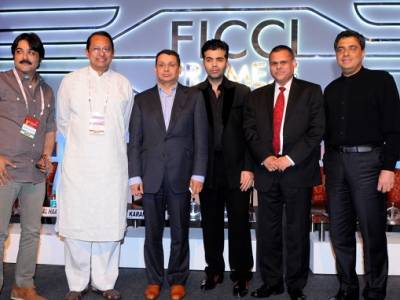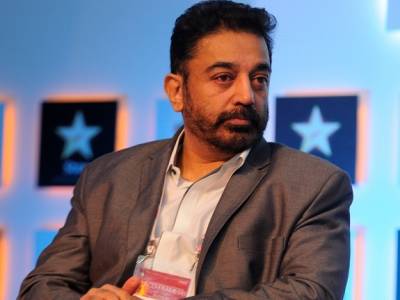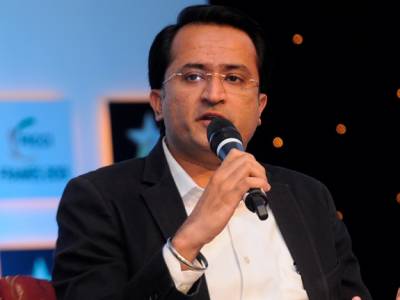FICCI FRAMES 2013: Digitization to change the fortune of Sports Broadcasting
The third day of FICCI FRAMES 2013 saw some of the key stalwarts of the business of sports and sports broadcasting industry come together to address and touch upon one of the biggest problem currently plaguing the world of sports broadcasting in India. The session deliberated on the deep seated hurdles plaguing the business of sports which has evolved and yet lacking the direction to plunge ahead.
With a regime beset with escalating costs, restricted prices and little IP protection; offering compelling content to Indian viewers remains a challenge, what are those enabling policies that will take sports business and broadcasting to its next level. The panel consisted of Sundar Raman, CEO, IPL; Kushal Das, Secretary General, All India Football Federation; Prasana Krishnan, COO, Neo Sports; Venu Nair, Head-South Asia, World Sports Group and Nitin Kukreja, President, Star India Pvt. Ltd. The session was moderated by one of the most famed names in the commentating world, Harsha Bhogle.
The initial part of the session stressed on some of the most common issues faced by broadcasters in the industry i.e. the battle of Cost Vs. Revenue, if revenue is keeping pace with costs of the sports properties and whether they are viable. The session also touched on how broadcasters fair between airing cricket which has already established itself as a national sport and non-cricket sports which are still developing in India. Ultimately boiling down to the discussion whether costs on cricket properties are going on an upward spiral and if revenues are keeping pace with it.
Sharing his views and initiating the discussion was Nitin Kukreja, President, Star India Pvt. Ltd that has committed over Rs.38.50 billion over the last 6 years to acquire the rights to Indian cricket. He said “I think the challenges on the revenue part are manifold and are present in almost every field. The advertiser is always looking for continuous stream of content that he can count on for viewership. It’s the nature of the game, the format, the schedules which are different for sports hence influencing habit formation and therefore to get a consistent stream of advertising is a challenge. On the distribution front, the regulatory environment for sports is such that the catch up doesn’t happen and each step is a struggle. Also if you look at price caps every genre of content is treated similarly whether entertainment or sport or news. Any sport is bucketed together irrespective of viewership, so once again distribution has become a challenge and even monetizing a new form of content is a struggle because technology has emerged at a faster pace than regulation. The revenue stream is difficult to unlock in the value space.”
Commenting on whether revenues and costs were pointing in different directions Prasana Krishnan, COO, Neo Sports had added “The reality is that the revenue stream is still a little slow to catch up to today. The revenue streams are still not ramping up to costs. The DTH explosion has been slow and has not taken place at the rate we were expecting to. So you can say that the basic challenge is the cost structure, as it is slight above what is justifiable in the market at this point of time.
The next phase of the session stressed that when rights are being purchased, broadcasters are fully aware of the environment and are therefore making rational choices. Venu Nair, Head-South Asia, World Sports Group said, “ Most people who bid on the rights, bid on basis on data which they think will come up to performance, the question when you go out and bid, can it be recouped? The point is that unless you don’t bid on a cost that is unreasonable, you will not chase on its revenues. I believe this industry, like real estate, there is a price to every value point, if you can decide on a value point and stick to that, then you have a chance to make money.”
Taking a look on the positive side and supporting the claim that there is no crisis in the industry Sundar Raman, CEO, IPL said “I personally don’t think there is a crisis as stated out for cricket or for any other sport. There is a lack of opportunity in the industry and issues which need to be addressed and FICCI provides such a platform to address such issues. Today the amount of money that you notice in the markets such as UK, USA, South Africa or even Australia that a broadcaster gets paid is from subscription revenue. One of the major point broadcasters should look at is understanding the market size they exist in, once you are on track with that and recognise it you can understand the potential of revenue.”
India now is getting influenced with the western world and is opening up to sports outside the world of cricket. The challenge is to develop these sports in the Indian environment where cricket is so strongly rooted. On that Kushal Das, Secretary General, All India Football Federation said “The problem with football in India is football itself, you have every professional football league broadcasted across channels, if you compare the Indian league with other world class league you will see that it is not compelling. So if you look at it there are a host of problems as to why football is not being able to develop into a promising product. The challenge is to develop football as a compelling product through talent development and infrastructural improvements.”
To this Nitin Kukreja added, “Cricket is now not just limited to men, it has crossed on to the women league which has received a huge response from audiences. It has also now extended into university challenges which have so far been a very good experience. New formats and new sports development will not happen overnight it is a long term commitment. Down the years you will see content consumption develop among consumers to non-cricket sports”
Sundar Raman shared his view stating that “Every sport needs to be marketed. Every sport has a huge potential to be marketed in India and if you look at India you have almost every sporting property which has a commentary in that regional language. How well are stakeholders recognising the property, cricket is an advertiser and commercial friendly sport, it has a break after every over, but if you look at football which has only 2 breaks in the entire game, it doesn’t have the same sense of commercial flow and hence loses out on marketing. Formats shouldn’t be altered as to go commercially but should stick to its growth.”
When it came to the future of sports in India, panellists echoed similar thoughts that every sport in India cannot follow the IPL format. Different sports have their own commercial properties and qualities and will work at a particular moment in the market only when the audiences have matured to it and have a local connect to it. It cannot be a case of one size fits all. Success for any development will only come through long term commitment that will rely on price stabilization, digitization, familiarity and support.
To summarize the discussion, Harsha Bhogle stated that the industry as is still at a crucial stage where sports broadcasters are trying to balance and justify their rationale of purchasing sports rights in the country, brace for developments into non-cricket sports and look forward to the digitization boom. All broadcasters can do is hope for a positive outlook in a country where you first buy then negotiate.








Share
Facebook
YouTube
Tweet
Twitter
LinkedIn